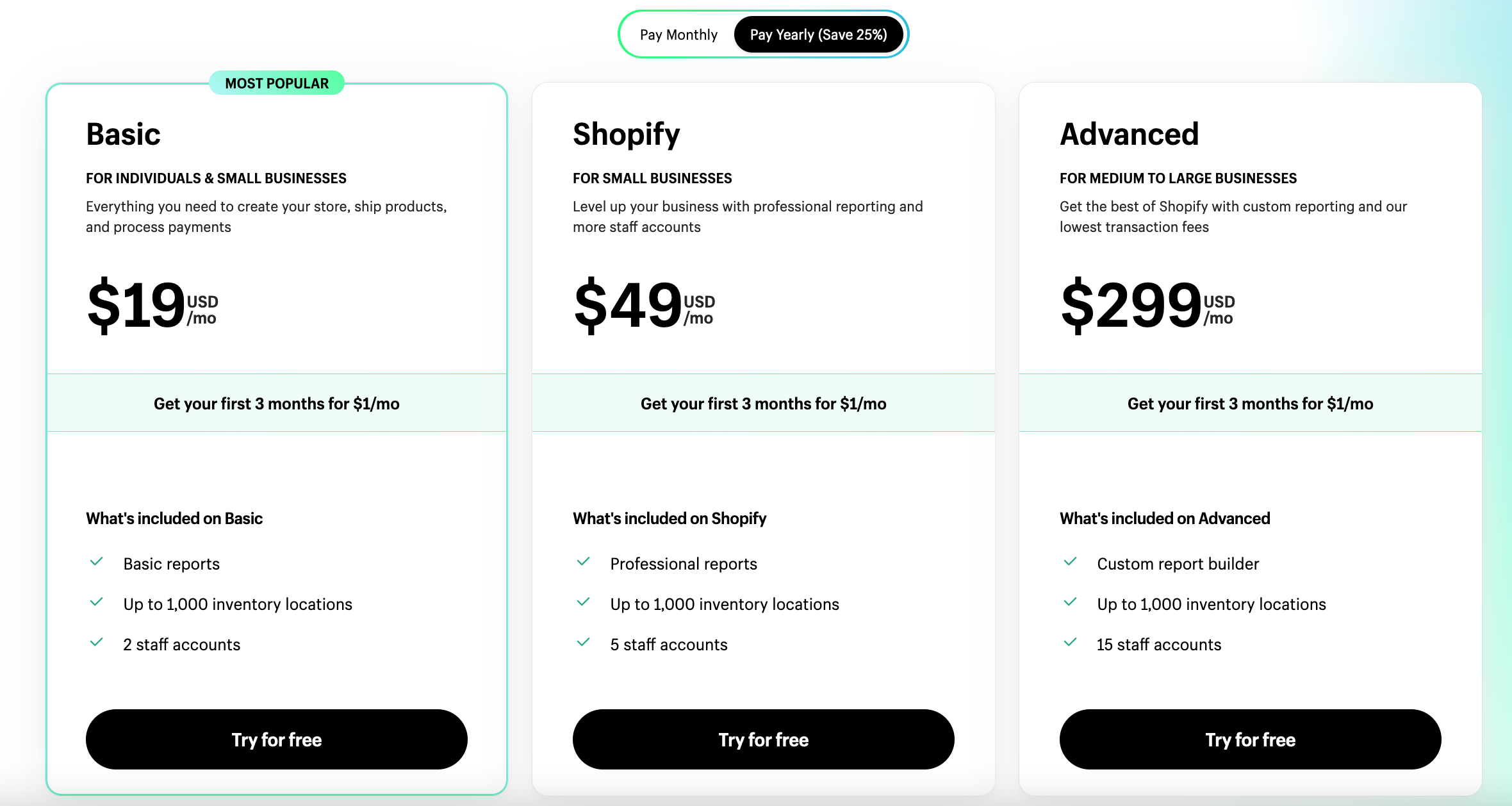The rapid advancements in technology and ecommerce have democratised access to business opportunities, supplies, resources and markets. Drop shipping has become one of the most viable and lucrative business models owing much to the low capital required to start this type of a business.
This guide is focused onHow to Start an Online Dropship Boutique.
Drop shipping Defined
Drop shipping refers to a business that sells products on a website or digital platform without the need to keep stock.
This business model works such that when an order is placed on the ecommerce website, order details are conveyed to the company that handles the supply (supplier) so that they can ship the goods directly to the buyer.

Drop shipping
Drop shipping is a low barrier to entry type of a business. You can start a drop shipping business with as low as $100 – $500. All you need to take off is setting up your Online Dropship Boutique, ideally on a solid ecommerce platform like Shopify ($19 per monthly paid annually), and do basic marketing just to get the ball rolling.
Advantages of Drop shipping
Drop shipping has various offers several advantages for budding entrepreneurs:
1. Low Start-up Costs: With this business model avoid hefty costs of stock and warehouse space.
2. No Inventory Management: You don’t need to worry about or invest in inventory management – the supplier handles all that.
3. Wide Product Selection: Since the business model is solely based on marketing and not the actual supply and delivery of goods, you have leeway to offer a diverse range of products as you are not limited by inventory costs.
4. Location Independence: With drop shipping you can literally run your business from anywhere in the world – as long as you have an internet connection.
Challenges of Drop shipping
Below are some of the challenges of drop shipping.
1. Supplier Reliability: There can be an issue with the supplier reliability that can result in problems such as stockouts and delayed shipping. You need to curate suppliers that you will work with and ensure you settle only for suppliers who can deliver according to your preferences.
2. Lower Profit Margins: Drop shipping can be quite competitive and this can result in lean profit margins. You will need to build relations with suppliers and bargain for better margins.
3. Limited Control over Inventory: Since you are not involved in the actual product development and supply; you will typically have less control over product quality and availability.
To alleviate this you need to leverage strong relations with your suppliers and work closely with their workflows and supply chains to ensure that stock levels on your drop shipping website are in sync with the product supply dynamics.
How to Start An Online Dropship Boutique
Market Research and Niche Selection
The first step in starting an online dropship boutique is to conduct market research with the aim of identifying your unique niche. Your market research exercise must be geared towards answering the following questions:
- Who are your potential customers?
- What are their nuanced and unique interests and preferences?
- Where are your potential customers located?
- What are the income thresholds of your target market?
Understanding your target audience is critical for structuring your online dropship boutique for relevance to your market and for your overall business success.
Researching Profitable Niches
Part of your market research is to identify niches that are profitable and resonate with your interests. Go for niches that have a good balance of evidence of success and demand.
In other words, the niche must be in demand but not over-saturated. For this exercise you can make use of tools such as Google Trends and keyword research tools like Google Ads keyword planner.
Evaluating Competition
The next step is to evaluate the competition landscape. The objective for this exercise is to find ways and an angle to differentiate your boutique from the rest. Try and answer questions such as:
- What will your value proposition be?
- What will be your pricing strategy?
- What will be your distinctive to help you stand apart from your competitors
Choosing the Right Products to Dropship
Your product offering is central to your business. You need to exercise due diligence in selecting products that align with your niche and target market. Don’t compromise on quality and uniqueness.
Also make sure you stick with suppliers that adhere to ethical practices in the manufactures of clothing and apparels.
Determining your Pricing Strategy
Consider products that will align with a viable pricing strategy for your business. Will you go for affordability or premium quality, or perhaps somewhere in the middle.
The key here is to ensure your prices align with the quality of your products offering and niche. Determining your pricing strategy must involve a consideration for profit margins.
You need to calculate what your potential profit will look like while factoring in the cost of goods (product costs) as well as shipping fees and marketing expenses.
Shipping and Returns
Once you have shortlisted suppliers for your online dropship boutique, you need to check the shipping turnarounds offered by the suppliers. Take note that longer shipping times may affect your business negatively.
Also pay attention to the returns policy. Stick to suppliers with a clear and customer friendly return policy so that you can leverage this to build trust with your customers.
Sampling and Testing Products
It is important to sample some of the clothing items from your suppliers. You can also do this by way of ordering a few items to test the quality of the products as well as the shipping experience.
It is crucial to encourage your customers to give feedback in the form of reviews and testimonials or social media comments. Feedback is crucial for social proofing and for adapting and improving your business.
Setting Up Your Online Dropship Boutique
Why Choose Shopify?

There are many good ecommerce platforms you can consider for your Online Dropship Boutique depending on the nature of your business, your budget and customer base. Platforms like BigCommerce, Ecwid, Squarespace, Sellfy come to mind.
However, Shopify is a leading ecommerce platform and best performing online dropship boutique platform overall.
The platform is user-friendly and versatile, allowing for fine grained customization options. The platform also comes with robust features tailored for the success of a drop shipping boutique.
Signing Up for a Shopify Account
To start using Shopify all you need to do is go to the Shopify website: www.shopify.com and sign up for a Shopify account. Look at the pricing below to choose a plan and pricing that suits your needs and budget. Note that in addition to the free plan, all plans have a free 14 day trial.
Shopify Month to Month Pricing

Shopify Yearly Pricing

Take note of the difference between Annual Plans and Monthly Plans.
A monthly plan is best suited for a beginner that wants to test the waters before committing into a long term annual plan that comes at a higher price tag (monthly fee X 12 months).
While in the long run, month to month plans will turn out to be cumulatively more expensive than annual plans, these plans are good for someone starting out and trying to figure things out before they commit long term.
The good thing with Shopify is that once your online drop shipping business is set, you can easily upgrade to high tier yearly plans that are cheaper when you look at the long term trajectory.
Registering and Connecting a Domain Name
Using Shopify as an ecommerce platform does not take away the flexibility of running your online boutique on your private and well branded domain. Shopify has a capability to connect your unique domain to the online drop shipping store that you will build on this platform.
While you can get your domain registered and connected within Shopify, I would recommend you register and host your domain name with Bluehost. With Bluehost you can register and host a domain for as little as $9.95 per month.
Choosing a Shopify Theme
The next step is to choose a Shopify theme. Shopify has dozens of high-end and professionally designed themes. You need to settle for a theme that aligns with your boutiques branding and style.
Also consider the features you will need for an online drop shipping boutique. For example, will you need video functionality, fine-grained product filters, a blog section and / or multi-language support? These are factors that determine which Shopify theme is best suited for your needs.
Whether you take up a free Shopify theme or a premium one with more features and controls, ensure that you take mobile responsive themes. This is important for Search Engine Optimisation (SEO) and general customer user experience.
Customizing Your Boutique’s Design
The next step is to personalize and customize your boutique’s design using Shopify‘s intuitive and user friendly drag-and-drop editor. Make sure you Add your logo, customize colors, and create a unique storefront that satisfies your branding preferences.
Adding Essential Pages
You need to set up additional pages for your online boutique. Include pages such as “About Us”, “Contacts” and “Policies” to provide more information about your brand and business to your customers and website visitors.
Pro Tip!
Also remember that transparency builds trust with your prospective customers.
Setting Up Payment Gateways and Taxes
Shopify makes payment integration a breeze. With over 100 payment gateways you will be spoilt for choice in configuring payment and tax options for your customers.
Consider the different geographies of your diverse customers and make sure you have set up all necessary gateways for all your customers.
Sourcing Reliable Suppliers
Your suppliers are key partners in this type of business. They handle the critical “half” of your drop shipping boutique business which involves product sourcing, inventory management, and order fulfilment. It is important to choose reliable suppliers with a track record of quality service.
What follows is to vet potential suppliers based on factors like product quality, shipping turnaround and overall customer service.
Building Relationships with Suppliers
Effective communication with suppliers is essential. Establishing clear expectations and maintaining good working relationships with your suppliers is the backbone of your business.
Using Shopify‘s Supplier Integration Features
Make use of Shopify’s wide range of apps and integrations to streamline supplier management and automate order processing and tracking.
Managing Your Online Boutique
Adding Products to Your Store
Make sure you add clearly written product descriptions accompanied by high quality product images to create compelling product listings. Make sure you highlight the benefits of your products and place a concise call to action (CTA) to each listing.
Inventory Management and Customer Service
Having sourced quality products from suppliers, you need to focus on inventory management and customer service. The best approach here is to monitor inventory levels and automate restocking.
You also need to avoid overselling as well as stock outs to maintain quality service and customer satisfaction. Shopify has effective inventory management features such as stock levels alerts and analytics.
Make the most of these to stay on top of your game.
Remember how drop shipping works, when orders are placed on your online dropship boutique, your suppliers will be notified so that they can deliver the goods.
Customer Service and Communication
Ensuring that your customers are always satisfied requires that you become intentional in creating a positive shopping experience, overall.
Also set mechanisms to address inquiries promptly and resolve issues fairly and timeously.
Managing Returns and Refunds
Set up clear and transparent return and refund policies and mechanisms. Be consistent in handling returns professionally to maintain customer trust.
Marketing Your Dropship Boutique
To catapult your new online dropship boutique you need to invest in an omni-channel marketing strategy that involves the following:
Content Marketing and Blogging: Create a high value content funnel that will convert cold leads to warm leads and to customers ultimately.
Social Media Marketing: Create a social media presence in key social media platforms like Facebook, Twitter and Instagram, etc. Maintain your social media presence with high value content, promotions, feedback and shoppable products. (Shopify has robust integration capabilities that enable you to push your products onto social media platforms- make the most of these)
Email Marketing and Shopify‘s Email Features: Make use of Shopify’s integrated email marketing features to build a captive audience through email lists. Send regular newsletters and promotions to your audience while leveraging Shopify‘s email marketing features for automation.
You can also including other marketing techniques such as:
- Paid advertising (Cost Per Click CPC) (Google Ads, Facebook Abs, etc).
- SEO Optimization and Shopify‘s SEO Tools
- Influencer collaborations
- Etc
Shopify has powerful SEO capabilities that enable you to define the meta tags and titles of your product pages – for SEO purposes. This enhances the visibility of your product pages on search engines, increasing your traffic prospects.
Growing and Scaling your Online Drop shipping Business
Once your online drop shipping business has taken off, now comes the fun part of scaling the business. To do this, you need to leverage traffic and sales data from Shopify’s analytics.
This data enables you to monitor your key performance indicators (KPIs) such as traffic, conversion rates, and sales. With such data you are able to identify areas of improvement and potential growth.
For example: you can identify product lines that are performing well and warrant more investment. You can also map out poor performing product lines that need to be boosted or perhaps eliminated from the range of products.
You can consider various ways of calling your drop shipping boutique such as opening new markets and /or widening your product line. You can also implement mechanisms to increase your sales volumes.
Consider adding complementary products to your offerings and also experiment with cross selling, upselling to bump up your average order values.
Final Thoughts
Starting an online dropship boutique is not only an exciting idea, it is a reality that can be achieved with the right set of tools and resources.
The Shopify ecommerce platform takes care of about 60% of what it takes to start and run a successful online dropship boutique.
Once your business is set, implement customer loyalty programs, scale your marketing efforts and focus on customer retention and enhancing brand loyalty.
All this must be plugged to providing exceptional and satisfactory customer services.
Remember a journey of a thousand miles begins with one step (Lao Tzu). Shopify offers free trials across all its plans to enable you to test your online drop shipping boutique ideas before taking any financial risk in the form of platform fees.
Take that first step and start your own journey today.
All the best!


